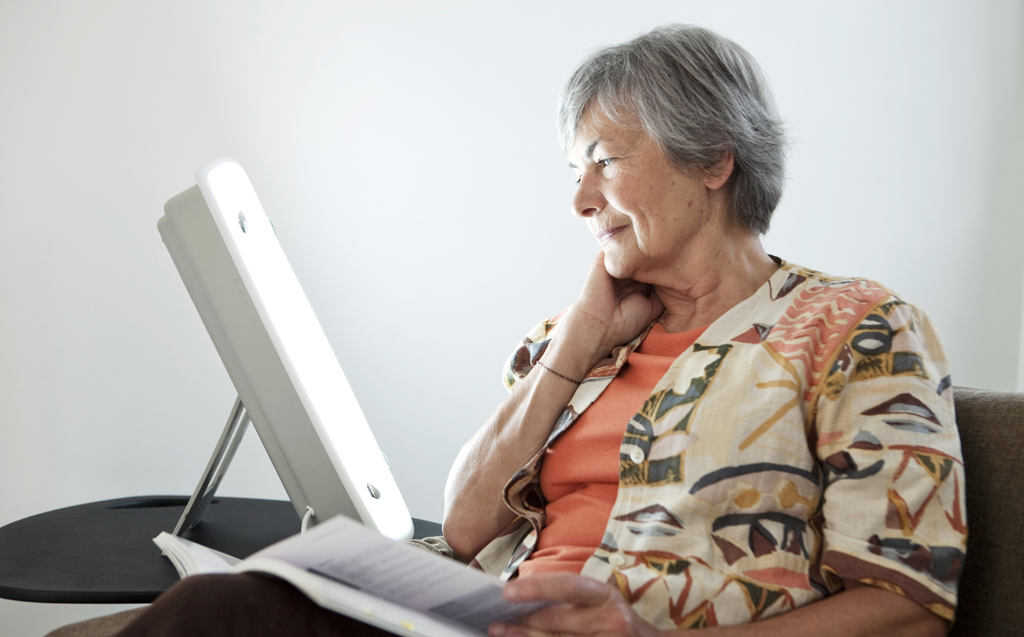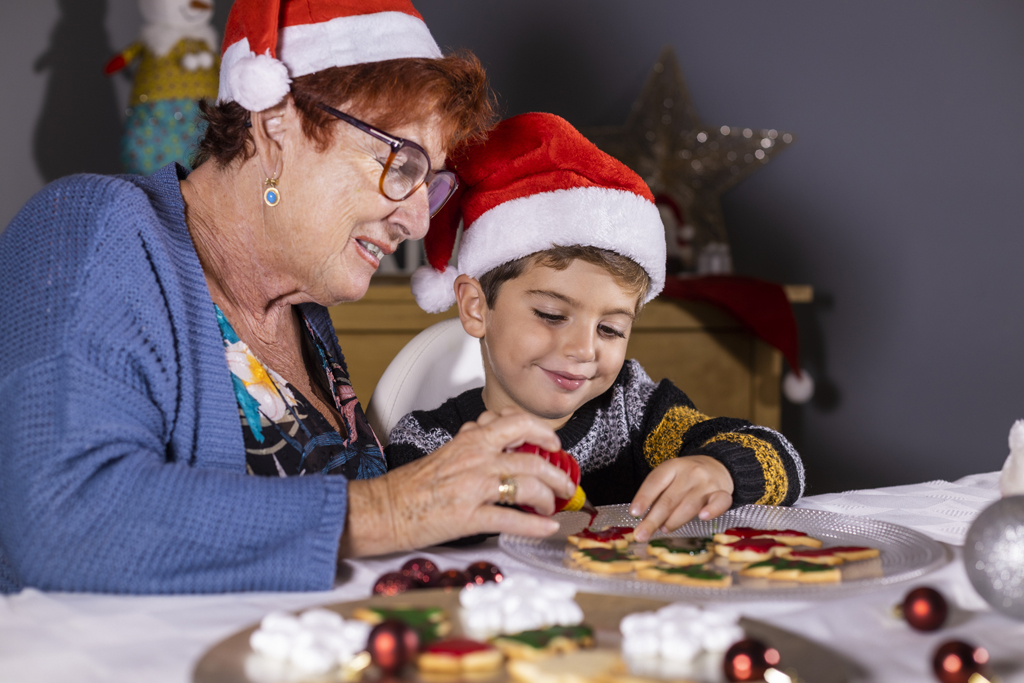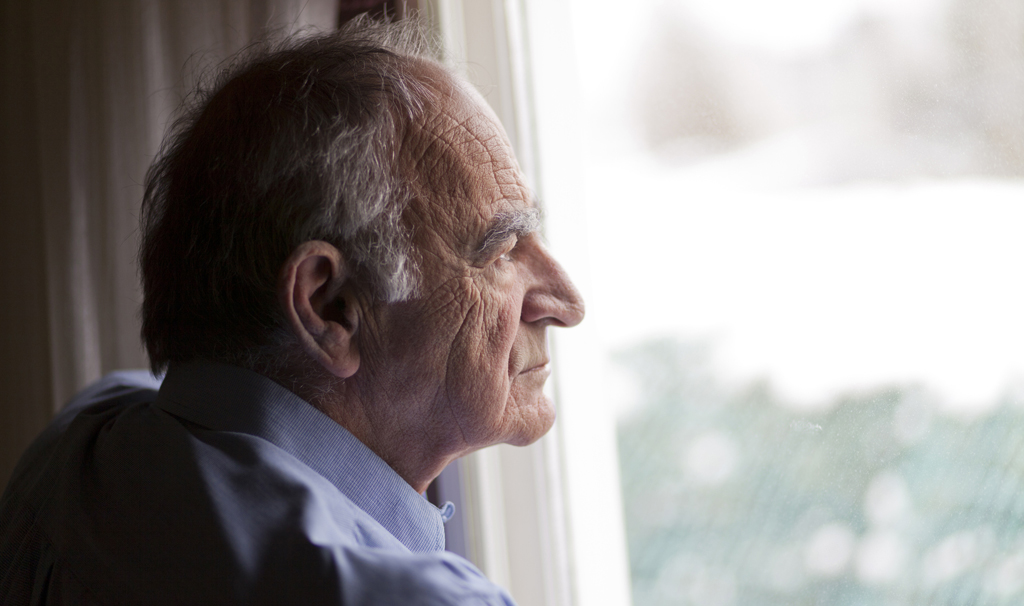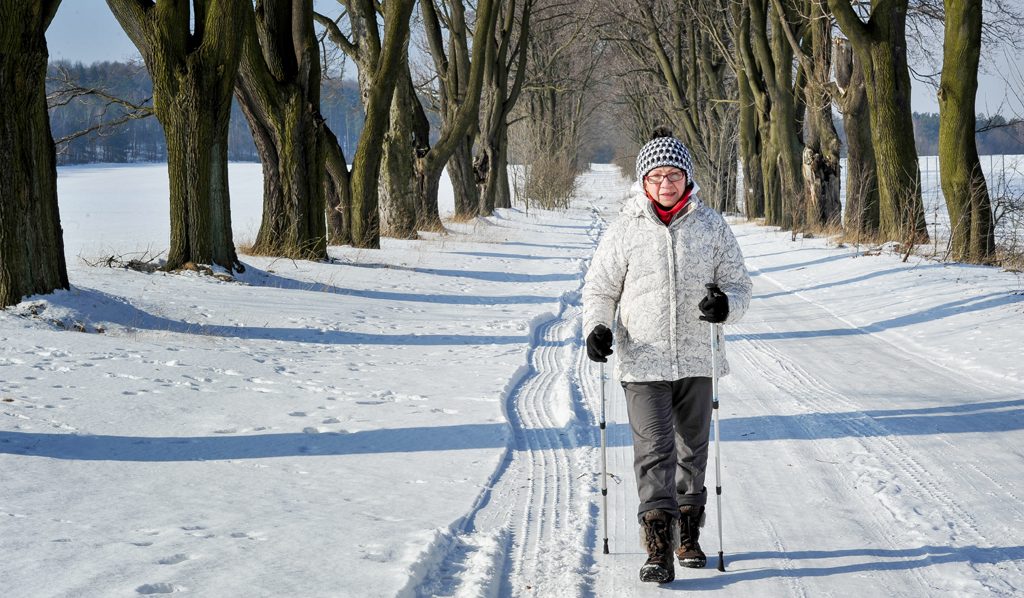Making the Transition to Assisted Living
While the trend these days is for older adults to remain in their homes for as long as possible, aging in place may not be feasible for everyone, and assisted living may be the better option. We have some suggestions for making the transition to assisted living as easy as possible.
First, however, you may wonder when you should consider assisted living for yourself or an aging loved one. Here are a few scenarios that may indicate assisted living may be the right choice:
- Chronic medical conditions are worsening, or there are multiple medical conditions.
- You, or your loved one, fall more often and are frail overall.
- Managing finances becomes overwhelming, there are money issues, or the older adult is the victim of a financial scam.
- The house is not clean, is cluttered or unsafe.
- There is a decreased ability to care for oneself, and personal grooming suffers.
- The senior demonstrates depression or social isolation.
- When dementia, Alzheimer’s, or Parkinson’s disease is an issue
The decision to move into assisted living isn’t an easy one for the older adult or their family. But having “the discussion” doesn’t have to be difficult, especially if you approach it well in advance. Framing it in favorable terms and doing advance research can help make the discussion go more smoothly.
Addressing the issue sooner than later will also help, mostly because the transition to assisted living is more comfortable when your loved one is ready. And the best way to be prepared is to have given it thought beforehand.
Granted, making a will or planning for the possibility of assisted living can be uncomfortable to think about and easy to put off. But, it can be even harder for everyone when those issues are not taken care of before they’re needed. If you think about assisted living as an option early on, you can have time to look for a suitable facility – and to start saving, so having enough funding isn’t an issue.
Here are a few ways to help make the transition to assisted living a bit easier:
If possible, keep it local.
By choosing a facility in the community, your loved one will have access to the same doctors and services they use now. The area will be familiar, making the transition easier. However, if a parent is moving to be closer to their grown children, it’s not always possible to stay in the community. Weigh the advantages and disadvantages of both moving to a new area and staying in the same area.
Visit the assisted living facility ahead of time.
Getting familiar with the layout, meeting staff and residents, and taking a few meals in the facility before the move will help make things familiar and make for a smoother transition.
Let the older adult(s) feel independent.
Family members should be present and visit often, but avoid hovering – and allow them to adapt to their new situation. Everyone should give the process time: some people get used to change more quickly than others. At the same time, don’t expect it to happen overnight.
Choose items to bring from the old home to the new.
Having prized possessions will help make the new housing feel like home. If you have no one to help with this process, a service like ours can help clear the clutter, choose what to bring, and pack it carefully for the move. And we can help you unpack as well!
Don’t bring a lot of “new stuff.”
A new living situation brings with it the temptation to get new things for your loved one, but it might be best to hold off and not overwhelm them with strange, new stuff at the start. You can send care packages once they settle in, but the best thing you can give your loved one is time. Be sure to stay in touch and visit often.
Take advantage of the available activities.
There are usually many activities taking place regularly at assisted living facilities. Participating can help save off loneliness and isolation.
As an older adult facing a move to assisted living, the best thing you can do is be prepared and keep an open mind. Don’t be afraid to ask questions and try to be your own best advocate. And be sure to socialize with your fellow residents! They were the newcomers at one time, and they understand the apprehensions you may have. Making friends and staying active is the best way to settle into your new home.
* * *
When seniors are ready to relocate – whether it’s to downsize or move to a senior living facility – we know how overwhelming it can be! Our Specialists take the emotional and physical stress out of senior moves because they understand what it is like to move a lifetime of memories and possessions. Contact us today!
During the holidays people are supposed to be upbeat, right? After all we say, “Merry Christmas” and “Happy Holidays” and all is festive and bright. But that’s not the case for everyone. For some people, the holidays can be a time of stress, anxiety, sadness and loneliness – or the “holiday blues.”
That can be especially true with seniors. During the holiday, you may notice a mood change in your senior loved one. They may seem uninterested in the festivities, appear sad or tired. It may not be the holidays that are the cause, but rather, memories of happier times and things that were lost through the years. Or they may be suffering from Seasonal Affective Disorder (SAD).
Seasonal Affective Disorder

One thing that can cause depression during the holidays is Seasonal Affective Disorder. SAD is a major depressive disorder that recurs during a specific time of year. For many people, young and old, it occurs in the fall and winter when there’s less sunlight.
According to the American Psychiatric Association, SAD symptoms can be range from mild to severe and can include some or all of the following symptoms, similar to major depression:
- Feeling of sadness or depressed mood
- Marked loss of interest or pleasure in activities once enjoyed
- Changes in appetite; usually eating more, craving carbohydrates
- Change in sleep; usually sleeping too much
- Loss of energy or increased fatigue despite increased sleep hours
- Increase in restless activity (e.g., handwringing or pacing) or slowed movements and speech
- Feeling worthless or guilty
- Trouble concentrating or making decisions
- Thoughts of death or suicide or attempts at suicide.
Symptoms of SAD are treatable. Treatment includes light therapy, anti-depressants and/or talk therapy. People affected with SAD in the winter months usually see improvement in spring.
Seniors and the Holiday Blues

For others, especially seniors, the holidays can trigger depressed feelings. Often the festivities of the season can bring up memories of loved ones who have died, making grief over their absence more acute. A senior may feel guilty about enjoying the season without their loved one.
In addition, family members may live far away, and a lack of mobility may prevent travel, even locally. The lack of interaction with others can increase a senior’s feelings of loneliness and potentially lead to isolation.
Symptoms of the holiday blues include most of the symptoms of SAD, plus:
- Expressions of helplessness
- Anxiety
- Loss of appetite
- Weight loss
- Lack of attention to personal care and hygiene
- Irresponsible behavior.
How to Help
The depression may pass after the holidays are over. But there are a few things families, friends and caregivers can do to help in the meantime.
- Reach out and include your senior loved ones in family events when possible.
- Get together and bake holiday cookies.
- Help them with their holiday shopping. Or invite them to accompany you on yours. It’s always nice to have a companion.
- Try making seasonal crafts. You can find plenty of fun and easy ideas online.
- Decorate their house. Get the kids involved and make decorating an event with hot cocoa and cookies. Indoor Christmas lights can be festive and may aid in relief of Seasonal Affective Disorder.
- Help them wrap their gifts or include them in wrapping yours.
- Call their friends and make a date for a visit.
- Simply ask how they are feeling. Let them know that they are in your thoughts.
- Take them outside. Fresh air is great for the mood and the sun helps with Vitamin D production.
- One of the best things to do with seniors is simply spend time with them. Whether you talk, watch a movie, or read a book, providing company helps prevent loneliness and isolation.
Other Types of Depression

If the symptoms extend beyond the holidays, they may evolve into major depression or persistent depressive disorder.
Everyone feels sad at times and may experience grief or sadness. But that usually passes and isn’t considered depression. According to the American Psychiatric Association, depression “causes feelings of sadness and/or a loss of interest in activities once enjoyed. It can lead to a variety of emotional and physical problems and can decrease a person’s ability to function at work and at home” and lasts at least two weeks.
There are several types of depression, including:
Major Depression is defined by the National Institutes of Health as “Severe symptoms that interfere with the ability to work, sleep, study, eat, and enjoy life. An episode can occur only once in a person’s lifetime, but more often, a person has several episodes.”
Persistent Depressive Disorder, which is defined by the NIH as “a depressed mood that lasts for at least 2 years. A person diagnosed with persistent depressive disorder may have episodes of major depression along with periods of less severe symptoms, but symptoms must last for 2 years to be considered persistent depressive disorder.”
Not a Normal Part of Aging
Depression is not a normal part of aging. In fact, most seniors aren’t depressed. According to the CDC, about 1% to 5% of those living in the community have depression. That number rises to 13.5% in those who require home healthcare and to 11.5% in older hospital patients.
Symptoms of depression are the same as those for SAD and the holiday blues, but last longer and may be more severe.
Depression in seniors can be caused by genes, brain chemistry and stress. Vascular issues may be to blame, as can other diseases, such as diabetes and Parkinson’s disease. Certain medications or combined medications can cause depression.
Treatment of Depression
If you are depressed or suspect a loved one is suffering from depression, the first step is to see your primary care doctor, who can test for underlying physical causes and assess medication effects. Your doctor may refer you to a specialist, such as a psychologist or a psychiatrist.
Major depression can be treated with psychotherapy, cognitive behavior therapy, medication, or a combination of them. It’s important to know that depression is a medical disorder and not a sign of weakness. There is treatment available.
* * *
The experienced and compassionate staff at The Maine Move helps seniors and their families evaluate what the best living situation is for their unique circumstances. We offer a complimentary consultation where we can talk about your or your loved one’s health and safety needs, moving plans, and what services we can provide to make the transition easier.
Halloween can be fun for kids and adults alike, but for some seniors – especially those who live alone – it can be a frightening time. Masked strangers and constant knocking can contribute to uneasiness during the holiday. Constantly getting up and down to answer the door can increase the risk of a fall.
There’s also the fear of unexpected pranks and possible vandalism: Insurance claims show that Halloween is one of the worst days of the year for homeowners and auto claims related to theft and vandalism.
But that doesn’t mean older adults should get spooked by Halloween. After all, why should they miss out on the fun? By following a few Halloween safety tips for seniors, it can be a joyous and rewarding evening no matter what your age.
Halloween Safety Tips for Seniors
- Go outside to give out candy, if possible.
Never let trick-or-treaters into your house or let anyone in to use the phone or bathroom. If weather permits, hand out candy from the porch. If you can’t go outside to hand out candy, use the peephole to see who’s at the door before opening it. - Keep pathways well lit.
That way you can see who’s there and you can be seen. Pathways also may have uneven pavement or bricks or may be slippery from rain. Reduce your fall risk by staying close to your home in a well-lit and open area. - Don’t let decorations impede the view.
Make sure they don’t block the light or views of main entrances, such as the front door, and make sure they aren’t in the way of trip trick-or-treaters. - Don’t use lighted candles as a decoration.
Lighted candles can be a hazard to you and to trick-or-treaters, whose costumes could catch fire. Use battery-operated candles instead. - Clear floors and hallways.
Make sure there aren’t obstacles on your path to the door. That includes stray cords, shoes, books, or other things that could trip you and cause you to fall. - Remember: You’re never too old to dress up!
If you dress up, be sure the mask (if you wear one) provides a clear view. Your costume should allow easy movement and shouldn’t be a falling or tripping hazard. - Invite a friend or family member over to help.
If you feel uncomfortable giving out candy by yourself, having someone with you may make it less stressful and more fun!
Safety Tips for Seniors with Dementia

Seniors with dementia or Alzheimer’s disease, who may already be anxious, may find Halloween especially upsetting. Halloween can be confusing and can trigger behavioral problems because of environmental changes, strange people in and around the house, masked visitors, misperceived threats and fear of the unknown.
Also, Halloween occurs around sundown, which can be a particularly difficult time of the day for people with dementia. Sundowner’s Syndrome is a state of confusion occurring in the late afternoon and spanning into the night that occurs in people with dementia and Alzheimer’s disease.
Never leave a person with dementia at home alone on Halloween. Have someone stay with them or take them to another setting such as an event at a senior center or a family member’s home for a few hours.
Tips for Seniors Who Don’t Want to Give Out Candy
If a senior has dementia, is physically unable, or doesn’t want to hand out candy themselves, there are a couple of things they can do:
- Put candy in a bowl on the porch with a sign that says, “One candy per person, please.”
- Ask a neighbor to give out candy for you and put a sign on the door that says, “Candy for this house being given out next door.”
There’s some debate over whether to leave a light on outside if you aren’t giving out candy at all. On one hand, leaving the light off is a sign that no candy is being given out. But it’s also a sign there’s no one home, increasing the risk of vandalism or burglary. It may be better just to leave the porch and inside lights on and put a sign on the door that says, “Sorry, no candy at this house.”
* * *
According to the AARP nearly 90% of older adults want to age in place and maintain their independence. An important factor in aging in place is a safe home with minimal risks. The Maine Move can perform a safety assessment to identify risk factors and help get necessary modifications made. Up to 50% of home accidents among seniors can be prevented by proper home modifications and repairs!
Call us for a complimentary consultation to assess your needs 207-313-3797.
Falls Prevention Day was last month, but every day is a good time to talk about the serious issue of senior falls. Did you know that more than one out of three people over the age of 65 falls each year and falls are the leading cause of fatal injury in seniors?
Falls can pose a very real risk to your independence, your health and your life – and falling once doubles your chances of falling again. Not only can a fall cause serious injury, it also comes at a cost: In 2020, the cost of falls in the elderly is expected to reach $6.7 billion. Much of that cost is paid by Medicare, but in 2015, about $12 billion was paid by private insurers (which can result in rate increases), and families.
The good news is that while senior falls can’t be prevented completely, there are things you can do to lower your risk of falling.
Why Seniors Fall
While the risk of falling rises with age, falls aren’t an inevitable part of aging: There are several reasons for senior falls. Any one of them, or a combination of two or more, can increase your chance of falling. The more risk factors you have, the greater the chance you will fall.
Here are some of those factors, along with what to do about them:
Poor eyesight
Eye disease or failing vision can make you misinterpret what you see or not see a hazard at all.
What to do: Have your eyesight checked regularly, and if you are prescribed glasses, be sure to wear them. If you have a new prescription, take time to get used to your new glasses.
Medical conditions
Conditions such as diabetes, heart disease, or problems with your thyroid, can affect your balance.
What to do: Be sure to see your doctor regularly and tell them if you are having balance issues. Your health is an important factor in preventing falls.
Lower body weakness
Weakness or pain in the back, hips, or legs can affect your balance.
What to do: Use an assistive device, such as a cane or a walker. The cane should be the right size for you and the walker wheels should roll smoothly. Be sure to consult your doctor about choosing the right device.
Prescription medication

Talk to your doctor about medications that may put you at risk of falling.
Some prescriptions can cause dizziness or confusion. If you’re on several medications, the combined effect may cause balance issues.
What to do: Talk to your doctor or pharmacist if your medication makes you dizzy or confused. It’s possible you may need a change in the dosage, or a different medication may be needed.
Foot problems and unsafe footwear
Foot problems can affect your balance and wearing the wrong footwear can be a cause for senior falls.
What to do: Wear rubber-soled, no-skid shoes, or lace-up shoes with non-skid soles that fully support your feet. Women should forgo high heels and stick to low heels.
Decreased endurance and slower reflexes
You aren’t quite as strong or nimble as you once were. Slower reflexes make it more difficult to react to the unexpected and lower endurance means you tire more easily. When you’re tired, it’s much easier to trip and fall.
What to do: Talk to your doctor about physical exercise that works for you. Regular exercise strengthens muscles and increases endurance. It helps with flexibility. And it’s good for your mental health, too!
Fear of falling
Believe it or not, being afraid of falling puts you more at risk of falling! Sometimes older people avoid outside activities because they’re afraid of falling. But not exercising and keeping active leads to a decrease in muscle strength, endurance and flexibility, which in turn put you at risk of falling.
What to do: Talk to your doctor. They can assess your medical health and reassure you about your risk. Perhaps try exercises such as tai chi or yoga that will help strength and boost confidence. Don’t be afraid to be active!
And of course, be sure to get plenty of sleep and avoid excessive alcohol.
Outdoor falls

About one-quarter of all falls occur outside, but near your home. When outside:
- Watch for uneven sidewalks or cracks in the sidewalk; walk on grass if you don’t feel comfortable on pavement.
- Be sure to wear your prescription eyewear when walking outside.
- Use extra care when there’s rain, snow or ice.
- Wear comfortable shoes with non-skid soles.
- Be aware of curbs and changes in elevation.
- Take your time.
Risk factors at home
Right inside your home there may be many risk factors you never thought about. Six out of 10 falls happen in the home. Here are some ways to make your home safer and to lower your risk for falling:
Staircases
- Clear staircases of all objects such as books, baskets and shoes.
- Put a rail on each side of the staircase and make sure the rails are secure.
- Don’t use scatter or small area rugs – especially at the top or bottom of stairs.
Kitchen
- Keep items on lower shelves
- Never use a chair as a stepstool. If you need a stepstool, get one with a railing.
- Get a “reach stick” grabbing tool at a local hardware store or medical supply store for hard-to-reach items.
Living areas
- Make sure the home is well lit, especially at the top and the bottom of staircases.
- Keep the main walkways in the house neat and make sure there are no books, shoes, or other objects in the way.
- Tape the edges of large area rugs or affix them to the floor to prevent tripping.
- Put no-slip strips on tile and wooden floors.
- Place electric cords and telephone wires neatly near walls and away from walking areas.
- Arrange or remove furniture so there is plenty of room for walking.
- Keep items you use often within easy reach.
- Be aware of where your pet is whenever you get up or walk around.
Bedroom
- Use a night light and have light switches close to your bed.
- Keep a flashlight by your bed in case the power is out, and you need to get up.
- Keep your telephone near your bed.
Bathroom
- Install grab bars in the tub/shower and near the toilet. Consider using a shower chair and hand-held shower.
- Place non-skid mats, strips, or carpet on all surfaces that may get wet.
- Have a night light in the bathroom.
Get a Home safety assessment
One way to reduce the risk of senior falls is to make sure your home is safe and presents a low fall risk by doing an in-depth risk assessment. A home safety assessment is especially important for those who wish to age in place. Up to 50% of home accidents among seniors can be prevented by proper home modification and repairs. We can assess your home’s safety, recommend the necessary modifications to make your home environment safe. For more information, go to https://themainemove.com/our-services/home-safety-assessments/ or call for a free consultation: 207-313-3797.